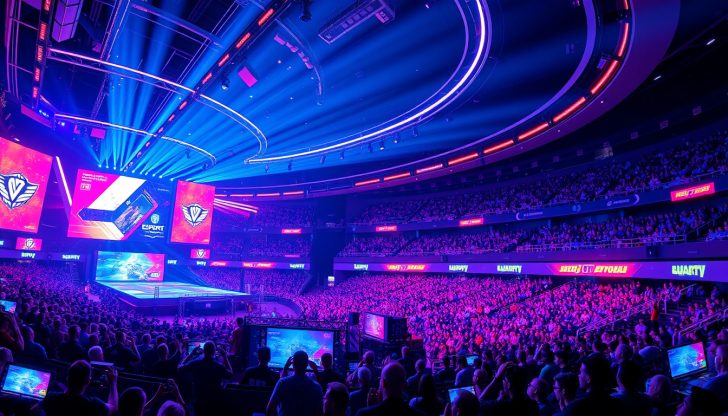Inside the Esports Arena: The Future of Competitive Gaming and Spectator Experience

Esports rise changes views. Gaming turns live. Venues gather fans. These spaces host matches and serve players. They build a community that feels as real as sport.

The Concept of Esports Arenas
Esports arenas support live play and friendly meetups. They use top tools for games and place seats close to screens. The view comes clear on large displays. Both top players and new fans come here. The space brings gamers near one another by keeping action and talk closely tied.
Founders Paul Ward and Tyler Endres set up an early arena in Santa Ana, California. They saw a need for a space that works for casual players and for pros.
The Evolution of Esports Arenas
The first arena opened in 2015. That event marked change in game sports. The venue hosted games like Hearthstone and Super Smash Bros. Fans gathered to watch contests up close. New arenas sprang up in cities. Places like Oakland and Las Vegas now hold events. Las Vegas shows a spot that feels like a well-known sports field.
Today, many esports arenas sit in busy city centers and game hubs. They host contests, serve as training spots, and mark spaces for fun. They also bring people together for small events.
The Spectator Experience
Esports brings fans more than just a game to watch. The arenas keep fans close to the action. Big screens and clear sound link the play and the crowd in a tight space. Fans do not sit back; they join the live cheer. They hear live talk and share quick words with players.
Events plan parts for every fan. Some fans come as long-time followers. Some come out of simple interest. Food and drink stands sit near the game floor. The mix of games and a fun scene draws many eyes. It pulls game fans and new watchers to join in one space.
The Future of Esports Arenas
Esports climbs in fame and proof. Experts say more arenas will open as game sports grow in reach. Venues now act as warm spots that bring fans and play together. New ideas make the scene work better. New tech like virtual reality and augmented reality may join play to add extra fun for fans.
The link with regular sports and media builds a tie that joins game fans and sports fans. Mixed events join both groups in a shared space and mark a change in live play.
In short, esports arenas do more than host games. They grow as spots for game life and close community ties. They show a shift in the world of play. They shape both contest scenes and the act of watching, thus giving a new face to what being a fan means in our digital age.
